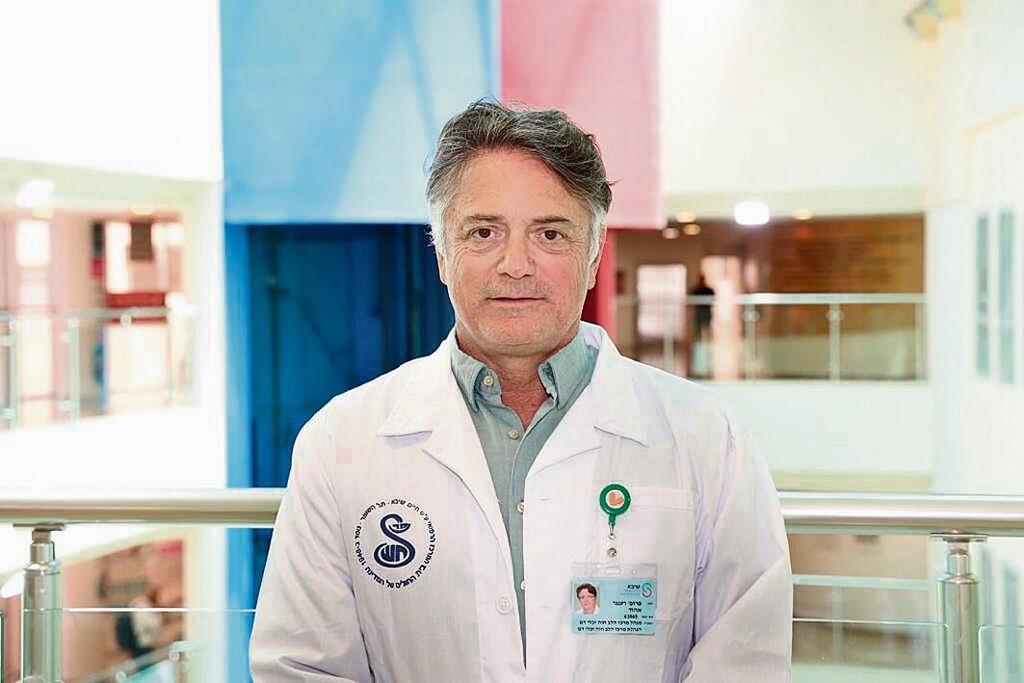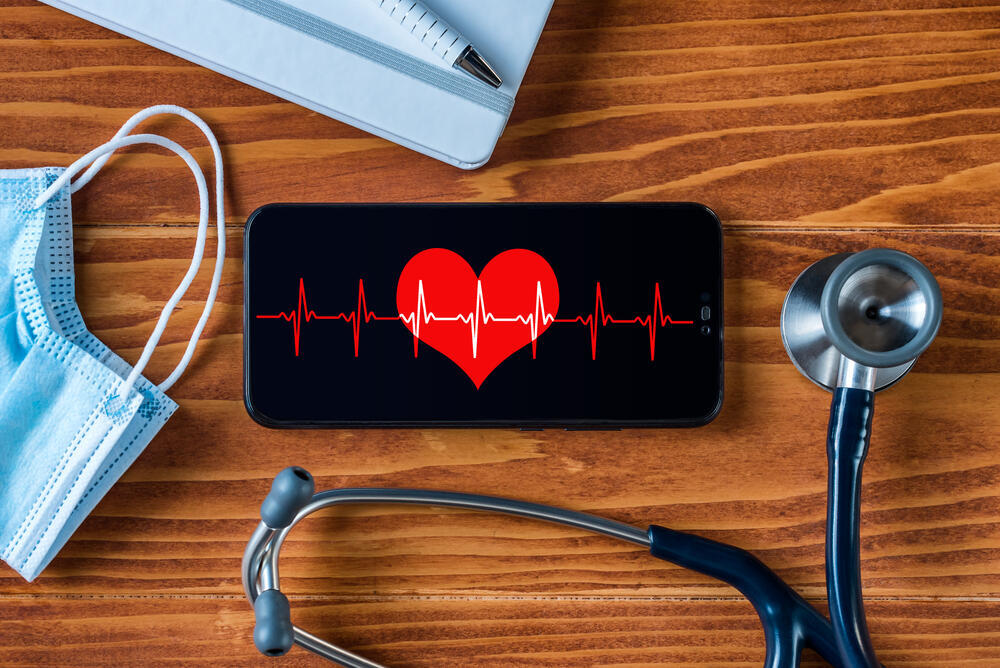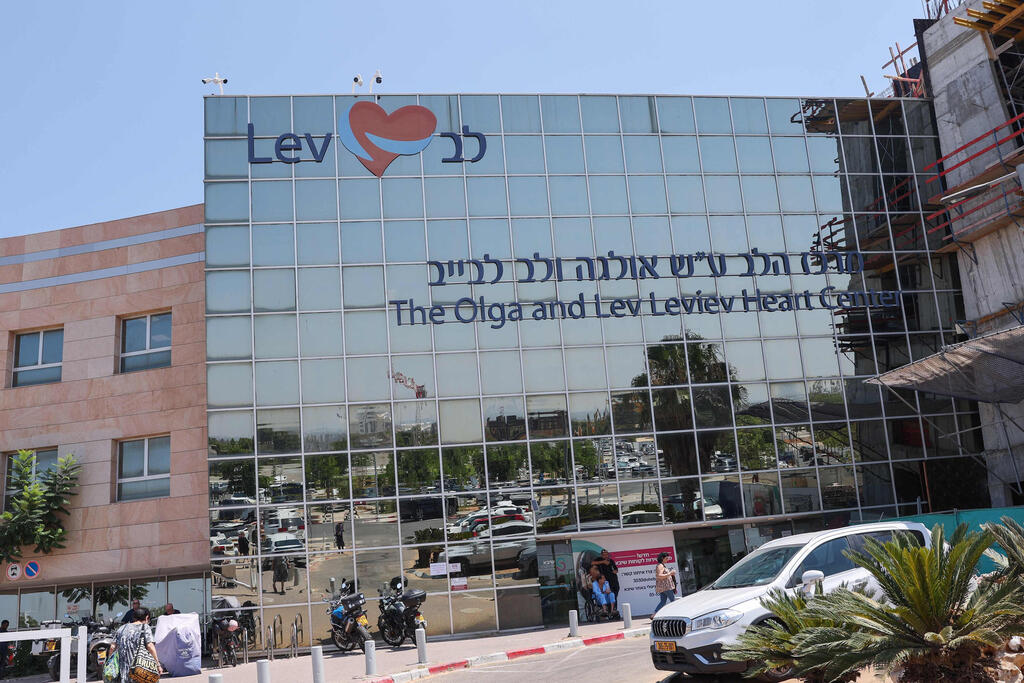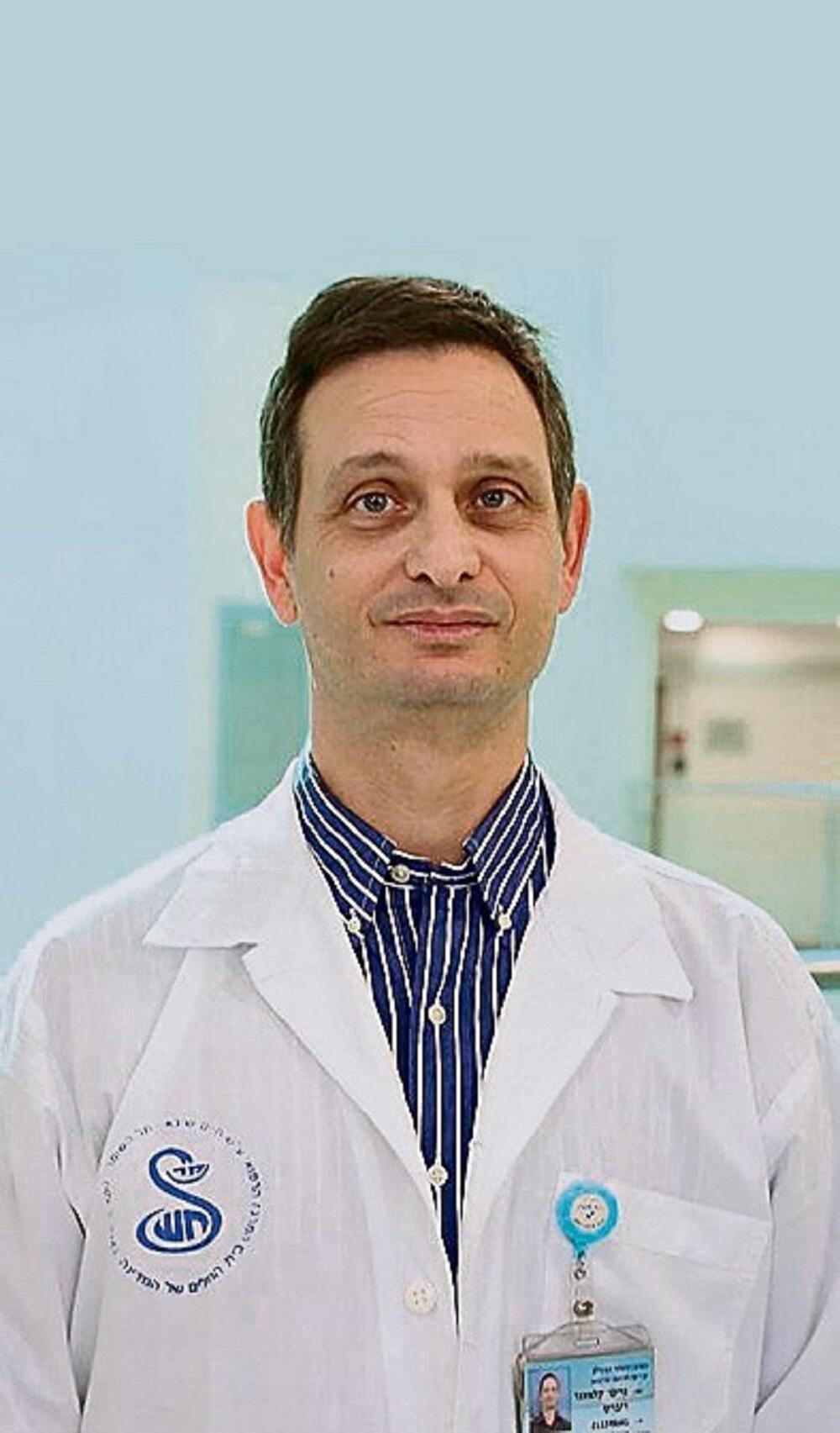“Give us any challenge you can think of, and we'll solve it within three weeks." This request was made by graduates of the IDF’s Unit 8200, an elite group of technological geniuses, to Prof. Ehud Raanani, the director of the Heart Center at Sheba Medical Center.
Read more:
They were looking for a meaningful, impactful civilian mission, and Raanani, one of the busiest and most senior heart surgeons in Israel, took up the gauntlet. He shared with them one of the most difficult problems in his field, both in Israel and globally: the lack of availability of echocardiograms, the most basic and essential test used for evaluating heart structure and function. In the public health system of 2023, anyone needing this test will be forced to wait in line indefinitely.
AISAP in action
(Video: AISAP)
A little over two years after their initial probing meeting, this month saw the joint product rolled out for use across all internal departments at Sheba Medical Center: technology based on artificial intelligence that allows for quick and accessible execution of tests right beside the patient's bed. Equally important, the computer instantly interprets the findings and their significance. Within mere minutes, doctors receive a clear indication of whether there is a heart issue or not.
In 2019, a steering committee for improving care in internal departments concluded that access to vital tests needed to be increased in order to expedite medical diagnosis. One such test is the echocardiogram, which uses sound waves to create moving images of the heart muscle, its chambers, and other structures like valves. This non-invasive, radiation-free test is conducted in cases where there is suspicion of a heart function issue, and is intended to assess various medical conditions.
"We perform echocardiograms on anyone who has a reasonable suspicion of a cardiac issue and shows symptoms like decreased stamina, fatigue, shortness of breath or chest pains," explains Prof. Robert Klempner, who is not only the director of the Heart Rehabilitation Institute at Sheba but also a co-founder and the medical director of the company that developed the new technology.
"Patients are sent for this test also because of suspicions raised during a physical examination, which may indicate a cardiac issue. The sensitivity of the stethoscope, currently used for the same purpose, is low."
Adiel Am-Shalom, co-founder and CEO of AISAP, who has never studied medicine but sounds like a cardiologist himself, elaborates. "The echocardiogram can provide both a functional and structural image of the heart muscle. It's the first tool that's used, the bread and butter of the entire cardiac diagnostic process.
Every hospital in Israel has an echo lab, each with a certain capacity for tests. Sheba has nearly 2,000 beds. The number of tests that doctors here request is enormous, and the demand far outstrips the supply. In such a situation, you either delay the patient's hospital stay, exposing them to dangerous infections, or you say, 'Please have an echocardiogram done in the community.' In a significant percentage of cases, these fall through the cracks."
Falling in love with the world of medicine
Into this vacuum enter the technologies of AISAP. Am-Shalom, 37, actually started in cybersecurity. "I was a code kid who loved to program," he says, "I served in a special unit of Military Intelligence, and then for many years in Unit 8200. I was involved in the core of offensive cybersecurity and was discharged about three and a half years ago."
Upon leaving the military, he discovered a new and exciting professional potential: dealing with ransomware attacks. "The thing that scared me the most was that I would leave the military and not find value in what I do," he says.
"That's what kept me in the IDF for so many years, even though I wasn’t made from military material. A week after I was discharged, I got a call from the CEO of a company whose computer servers had been locked. I went there, and within a few hours, we managed to save him from a significant cyberattack. I realized this is something I really connect with."
And so, Am-Shalom transitioned from offense to defense. "I had a list of the best technologies in the world, each one specialized in a specific field. We set a goal for ourselves: from the moment we accept the challenge, we have 21 days to develop a system that will solve the problem."
The pandemic provided Am-Shalom and his colleagues an opportunity to apply everything they had learned up to that point in the most urgent field in the world. "We built 3D printers for ventilators and released them as open source. The idea was that anyone could print their own machine at home. Among other things, we helped the Italians print machine parts that they were missing. That's how we were introduced to the medical world, and we fell in love with it."
The team members, which include Michael Feyman, Yehuda Levian, Amit Aharoni and Moshe Shemi, say it's not the money that drives them, but the challenge. With this drive, they came to Sheba.
The senior doctors presented the group with their specific echocardiogram problem: Each internal department at Sheba receives only about two allocations for such tests per day, when the minimum required is five or six. Multiply that by seven, the number of internal departments in the hospital, and you get a troubling gap of about a thousand missing tests per month.
"In the United States, there are heart diseases where 50% of the patients arrive for treatment too late and even die due to delayed diagnosis," says Prof. Raanani. "The echocardiogram is the first test that identifies such diseases, and its availability varies from place to place. The numbers in Israel are likely similar. And of course, there are gaps between the periphery and the center."
“When we looked into it, we realized that it's a global problem," says Am-Shalom. "This test has a clear bottleneck – the echo lab. The patient needs to physically go to the lab that performs the test. Skilled technicians are required to carry out the scan itself and know how to obtain the necessary images, and finally, you need a cardiologist to interpret the findings. With the internal departments being overloaded and the number of required tests, there's a strain on the system, preventing most patients from getting the test on time."
Handheld ultrasound devices, small and portable, are available in various departments in the hospital, but their operation requires high skill. Therefore, in many cases, they just gather dust. "Healthcare providers and even the military have distributed such devices to various clinics and units," says Raanani, "but they're not being used because the doctors don't know how to interpret the test."
The young team attacked the problem head-on, and after five days and nights filled with calculations and formulas, Am-Shalom announced in the doctors' WhatsApp group: "We've succeeded in teaching the machine to differentiate between various indicators."
Five more days later, they managed to train the machine to identify a crucial parameter for diagnosing heart failure, the most expensive and hardest-to-treat disease for those over 60. "We realized that if we could apply this knowledge to handheld ultrasound devices, which a doctor carries in their coat pocket, we could eliminate the need for the echo lab, at least for basic screening. The doctor would place the probe on the heart and immediately receive a clear report, just like in the lab, anytime and anywhere," says Am-Shalom.
With this ambitious vision, they set out to conquer their next goal: to teach artificial intelligence to interpret the test itself. "The question was how to find 80% of the findings you're looking for, from as few indicators as possible. In other words, from two or three strategic points where the ultrasound is placed," says Professor Klempner.
And so, in a small room allocated to them at Sheba Medical Center, the team taught artificial intelligence to perform and interpret a complex examination that expert physicians take years to learn. "We got insane processing power, set the server room air conditioners to 14 degrees Celsius while we worked wearing coats to avoid freezing, and for two and a half years, we never turned off the computer," describes Am-Shalom.
"At a certain point, investors started showing interest. We knew that if we wanted to make an impact, we had to form a company and file patents. Medical trials cost money. We did the very first experiment in Poria [a hospital] because we wanted to test the theory that the machine would behave differently in the periphery, due to different medical practices there. Diagnoses are made at a later stage and patients arrive in more severe conditions. But even there, the results were excellent."
Watching a demonstration of the new technology, it's immediately obvious why it's so awe-inspiring. Dr. Kobi Firestein, a specialist, places the probe on the chest of a 70-year-old woman who had suffered a severe heart attack. The device's accuracy percentage is displayed on the iPad to which the probe is connected. He adjusts the positioning here and there, and the machine gives him a green light. Within seconds, the interpretation appears on the screen: dramatic improvement in heart function.
With the help of a $7.5 million investment that the company raised, clinical trials began. During these trials, it was found that just two imaging angles out of the 80 currently required yielded reliable results. "When we saw that we were getting almost the same results as in the lab, we realized we had something extraordinary in our hands," says Am-Shalom. "We went to the hospital director, Prof. Yitshak Kreiss, a man with a vision and deep concern for every patient. He was enthusiastic and told us, 'Go to internal medicine, give the doctors the probes, and prove that this thing works'."
To date, about a thousand patients have been screened using AISAP. At least one finding of moderate severity or higher was found in half of them, requiring medical attention. For 25% of the patients, the test changed the course of their hospitalization. Eight percent of those tested underwent life-saving procedures as a result. "While the accuracy of diagnosing heart failure through a physical examination alone, using a stethoscope, is 35%, the accuracy with AISAP testing is over 95%," says Prof. Klempner. "A systemic disease, which is found in a physical examination at a rate of 30 to 40%, is identified by AISAP with an accuracy of over 90%
"In every test, the machine generates between eight to ten diagnoses," says Am-Shalom. "Most patients have more than one finding. Out of the 1,000 people we tested, 1,160 findings requiring treatment were discovered. Of those, 395 required medical intervention.”
And this proves itself in the field time and time again. "Last week, a patient arrived at the emergency department with shortness of breath, and it was unclear what was wrong with him," recounts Am-Shalom. "He was not prioritized for a regular echocardiogram because his condition apparently didn't justify it. We immediately conducted a quick test and discovered that his heart function was very low."
"We had a patient who came in with shortness of breath," says Prof. Klempner. "She was discharged from another hospital six months ago with a recommendation for an echocardiogram, but nothing happened. Often, patients like these fall through the cracks. When we tested her with the new device, we immediately identified severe aortic valve stenosis and treated her accordingly."
Going global
In light of the test's success and the need for immediate solutions, the new technology received approval from the Health Ministry even before it was approved by foreign health authorities. In recent weeks, the new system has been introduced to all internal medicine departments at Sheba Medical Center, and doctors are undergoing training to learn how to operate it.
"AISAP is one of the standout startups that grew out of Sheba's innovation arm, on its way to revolutionizing the healthcare sector," says Prof. Eyal Zimlichman, deputy director of innovation at the hospital, who is a business partner in the new initiative. "By combining advanced technologies and artificial intelligence, we are already creating today the solutions of the future.”
And the future is already here. The developers have trained the artificial intelligence to autonomously identify the patient's age and gender. The group will present another achievement at the international cardiology conference to be held this month in Amsterdam: diagnosing a person's age solely based on the condition of their heart. "If the heart's age is older than the actual age, the risk of death increases by dramatically, and vice versa," explains Am-Shalom.
The principle upon which AISAP is based—a combination of Artificial Intelligence (AI) and the acronym for "As Soon As Possible"—will also allow for the examination of patients in remote areas, in rural settings, or even in a different country, without the presence of a specialist doctor or sophisticated medical equipment.
"Our vision focuses on rural areas where people don't get initial diagnoses due to a lack of resources," says Prof. Klemperer. "It would work in Australia, where they have flying doctors who reach remote areas, or in Africa."
In Professor Raanani’s vision, within three to five years, this test will become an integral part of everyone's medical routine—in the hospital, in community clinics, and perhaps even at home. "This device will be in the pocket of every doctor's coat and will replace the stethoscope, which provides very limited information," he predicts. "Instead of listening to the heart, the doctor could perform an ultrasound on the spot and know how to proceed from there."
And the vision doesn't stop at the heart. "We have initial evidence that the technology also works on abdominal organs. For example, in identifying aneurysms in the aorta," says Am-Shalom. "Any disease that can be diagnosed with ultrasound is on our list, including cancer. Ultimately, it's a mathematical problem hidden in the images. If we get the algorithm right, we can solve it."









